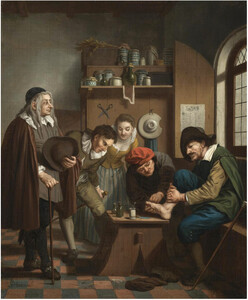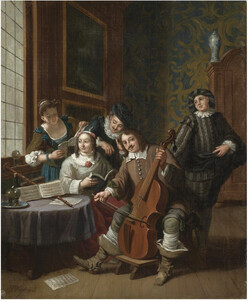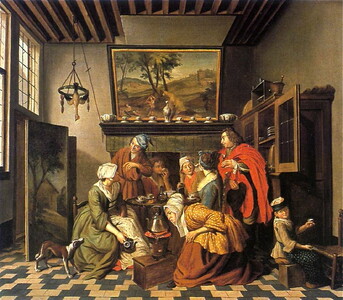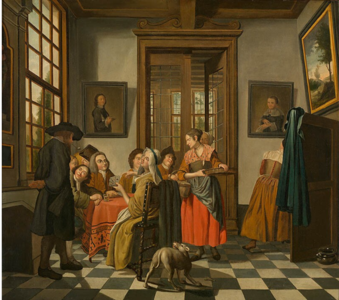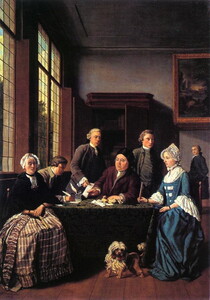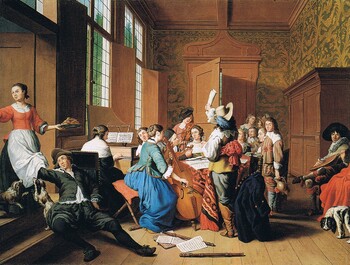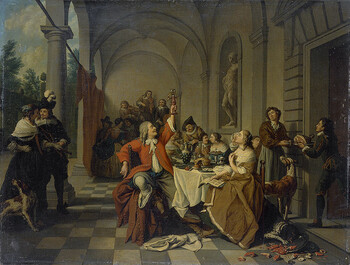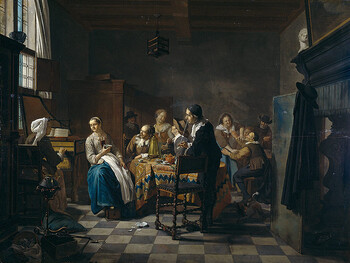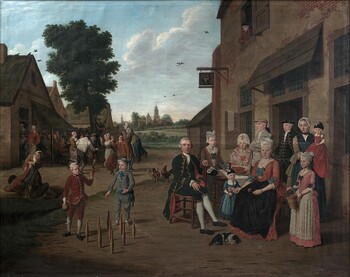Jan Jozef Horemans II
A feast on a terrace
Oil on canvas : 83 X 63 cm
Signed and dated 1759
Saint Petersburg, Hermitage
(at the museum the painting is erroneously catalogued as by
Jan Jozef Horemans I, who actually died in 1759, aged 77)
This is a comparative item
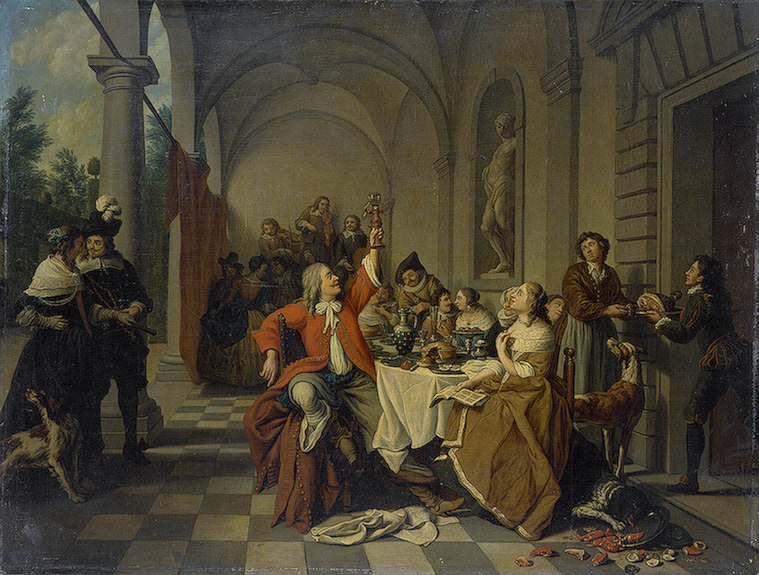
Painting for Sale
Horemans, Jan Jozef II
"The notary"
In short
Jan Joseph Horemans the Younger was a very productive, versatile 18th century Antwerp painter who inscribed himself, with a lot of respect for his 17th century Flemish predecessors, in a tradition of genre scenes and exterior family portraits. His compositions are happy, colourful and optimistic.
About Jan Jozef Horemans II
Flemish painter
Antwerp 1714 – 1792 Antwerp
Son and pupil of his father Jan Jozef I (1682 – 1759). Both painters were widely admired for their bourgeois interior and exterior scenes that admirably catch the spirit of their age.
Both painters’ second first name is sometimes spelt Josef.
Jan Jozef the Younger was Dean of the Painters’ Guild of Saint Luke in Antwerp in 1768-69 and in 1775-76. As the son of a painter who was already a member of the Guild he seems not to have been in a hury to become himself a Master in the Guild; he only officially joined in 1767, seven years actually after his father passed away.
Our painter was also member of the newly created (1788) artistic circle called “De Konstmaetschappij”, where artists would gather every week to know more about the members’ artistic production.
He was strongly influenced by his father:
- both painted small, anecdotic paintings, representing pleasantly animated bourgeois interiors strongly inspired by traditional 17th century Flemish (David Teniers II and Hieronymus Janssens) and Dutch genre painting (Gabriel Metsu and Pieter de Hooch) and by the contemporary English so-called “conversation pieces” of William Hogarth;
- both used the same signature.
Still it is fairly easy to recognize the differences between father and son:
- the father used darker colours (hence his nickname “Le Sombre” or
“le brun”) and his figures are stiffer.
- the son had a more refined colour scheme, using lighter colours
(therefore his nick-name was “Le Clair”).
Why should you buy this painting?
Because it is a typical interior scene of Horemans the Younger: a lively, clear and colourful depiction of an 18th century notary office.
Comparative paintings
Click photos for more details

